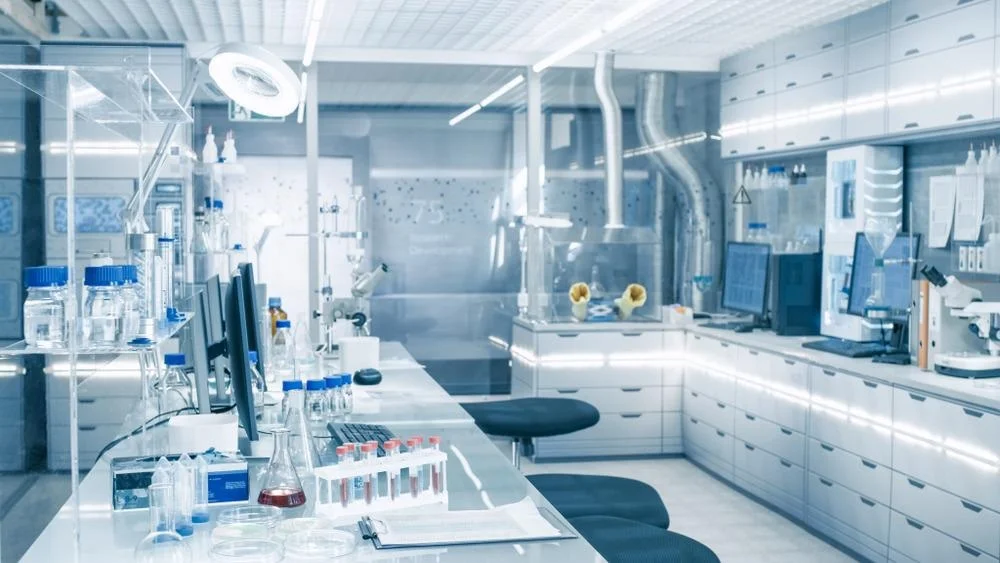Indoor Air Quality Organic VOC Testing
The quality of indoor air is crucial in maintaining a healthy and productive environment within buildings, especially in sectors such as healthcare, education, and residential areas. Volatile organic compounds (VOCs) are a significant concern due to their potential impact on human health. Eurolab offers specialized Indoor Air Quality Organic VOC Testing, which ensures that the air quality inside your premises meets strict international standards.
VOCs are gases emitted by certain solids or liquids, including paint, cleaning products, and other chemical compounds used in construction materials. They can have short-term adverse effects on human health if present at high concentrations. The testing process involves collecting indoor air samples using airtight samplers or sorbent tubes placed at strategic locations within the building.
Our team of experts uses advanced analytical instruments such as gas chromatography-mass spectrometry (GC-MS) to identify and quantify VOCs present in the sampled air. This method allows for precise detection even when dealing with trace levels of compounds. The testing process also includes a rigorous sample preparation protocol that minimizes contamination and ensures accurate results.
The accepted standard for this type of testing is ISO 16007-2:2019, which outlines the methodology for sampling and analysis of volatile organic compounds in indoor air using solid sorbent tubes. This international standard provides a robust framework that guarantees consistent and reliable test outcomes across different environments.
| Applied Standards | Description |
|---|---|
| ISO 16007-2:2019 | Methodology for sampling and analysis of volatile organic compounds in indoor air using solid sorbent tubes. |
| ISO 16017:2019 | Guidelines for the measurement of volatile organic compounds in indoor air using passive samplers. |
The testing process begins with a site visit to assess the layout and potential sources of VOCs. Our team then selects appropriate sampling locations based on factors like ventilation, occupancy rates, and specific emission sources. Once the samples are collected, they undergo rigorous analysis using state-of-the-art equipment.
Our laboratory adheres strictly to ISO standards when reporting results. The report typically includes a detailed breakdown of all detected VOCs along with their concentrations. This information is invaluable for identifying problem areas within your building and implementing corrective measures if necessary.
Applied Standards
| Standard | Description |
|---|---|
| ISO 16007-2:2019 | Methodology for sampling and analysis of volatile organic compounds in indoor air using solid sorbent tubes. |
| ISO 16017:2019 | Guidelines for the measurement of volatile organic compounds in indoor air using passive samplers. |
The standards we follow ensure that our testing methods are consistent and reliable across different environments. This consistency is crucial when comparing results from various tests conducted over time or between different buildings.
Eurolab Advantages
At Eurolab, we pride ourselves on offering comprehensive and accurate testing services tailored specifically to your needs. Our experienced team of professionals uses cutting-edge technology and adheres strictly to international standards. This ensures that you receive precise results every time.
- Precision: Our advanced analytical instruments provide highly accurate measurements.
- Reliability: Adherence to ISO standards guarantees consistent and reliable test outcomes.
- Expertise: Our team of experts has extensive experience in conducting indoor air quality tests.
- Compliance: We ensure that all our testing methods comply with relevant international regulations.
In addition, we offer a wide range of other services related to chemical and environmental testing. Whether you need assistance with product development, raw material inspection, or emissions monitoring, Eurolab has the expertise to meet your requirements.
Quality and Reliability Assurance
- We follow strict quality control procedures throughout every stage of our testing process.
- All personnel involved in testing are certified professionals with relevant qualifications.
- Our facilities meet the highest standards set by international bodies like ISO.
- We continuously monitor and improve our processes to ensure top-notch performance.
The quality control measures we implement play a crucial role in maintaining high levels of accuracy and reliability. These include regular calibration of instruments, validation of test methods, and internal audits. By doing so, we can provide you with confidence that the results we deliver are trustworthy and reliable.





